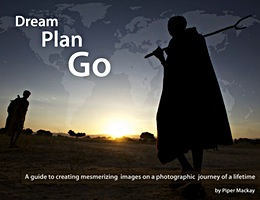
When I first picked up a camera, I did not even know what it meant when someone said, “the light has gone flat,” and I would not want to complicate it even more by using a flash!
When most of us started on our photographic journeys, we understood there was good light, bad light, and the “golden hour”, a very simplistic approach, yet incredibly limiting. Recently, I have been viewing through years of my work, and I cringed at how long I stayed in the space of “good light.” I yearn to go back and retake so many photographs with the light anywhere but over my shoulders!
Yes, I chat about light constantly, but light adds tone, mood, and atmosphere to an image. The direction of light, such as side lighting, gives depth to a subject, illuminates dust and smoke, and has a much more dramatic effect in a photograph. The most powerful tool a photographer can have is learning to see the light and knowing how to use it. Top professionals build an entire style around the way they use light.
A defining moment in my photography was when I purchased my first flash, slapped it on my camera, and tried to create the “WOW” factor I saw in the work of other photographers I greatly respected. I soon discovered it was not the additional light that mattered as much as the direction it was coming from, so my next purchase was triggers to take my flash off the camera. At first, I could almost faint with excitement by what I could create when working with off camera flash in tribal areas, but I found it was impossible to use when photographing wildlife. No longer satisfied with boring, over the shoulder light, I began positioning the Land Rover around the wildlife so they were illuminated by side or back light. Understanding the direction of lighting and the depth of impact it had on my images elevated me as a photographer.
Since I love to keep it simple, I soon began using these directional natural light techniques in all my images. I have now made being conscious of the light the driving force behind my photography. My approach is, if I have picked up my camera, I already find my subject fascinating; consciously thinking about the light first, gives more depth to an image than a surface impression of an exotic subject. However, natural light has its limitation, especially when shooting environmental portraits. If you are exposing correctly for the environment, the landscape, your subject is in, then your subject will go dark. No matter how good your camera is, it is impossible to capture the entire tonal range in this situation. This is where using a simple fill flash to lift the shadows can make or break your photograph. Yes, it is another piece of gear, and there is a little more technology involved, but it is simple, and it can be the difference between an incredible image or an unusable one.
Light shapes the way a viewer perceives the subject. It is the strongest tool to communicate your experience to your viewer. Being conscious of the light during the photographic process is the first step in creating more meaningful images as opposed to mindless snapshots.
Are you thinking consciously of light before clicking the shutter? Are you using flash; if not, why not? Please share your comments below, so we may all benefit from your ideas.
Below are a couple of images, before and after, showing how significant using a little fill flash can have a huge impact on your photograph. The first set of images are of the exotic Gelada baboon found in the simians mountain. In the first image I did not use flash and the eyes are completely dark, which is the most important element for my viewer to connect with the subject. This could not have been corrected in post as the eyes are so dark there is no detail to retrieve even if you are shooting in Raw. Not only did the flash illuminate the eyes, but also revealed a hint of his, “red heart” that had been lost to the shadow cast from his long chin.
In the second set of images I loved the way the back lighting was illuminating the head piece. By exposing correctly for the backlight my subjects face went completely dark, so I used a little fill flash. Although you can still make out some detail in the image without flash, the shadows are too dark and the image would not hold up by trying to lift them in post.
I also used fill flash in the image at the top of the page. The sky over the background of the Simiens mountains was stunning, which is what I exposed for, and used a little fill flash to light up my subject. Without flash, creating this image would have been impossible and an incredible opportunity to make a stunning photograph would have been lost!










Fascinating article, Piper! I have long been interested by flash photography, especially fill flash for human portraits in evening settings. It can result in gorgeous photos, as you demonstrated. Having said this, for bird photography, I no longer use flashes for the simple reason that we have no idea what it does to their eyesight. This is most clearly an issue for night birds like owls, but could be an issue for all birds. We’ve recently discovered that birds see a far larger spectrum of light than humans do, so the impact of flash photography might be even stronger on their sight than for humans and other mammals. But as far as making great photos, you are right, using flashes consciously and intelligently provides terrific results.
Thank you for you comments Pierre and pointing out the sensitivity of using flash with wildlife. I don’t use flash too often with wildlife, usually in “grey light”, or in environmental shots like in this post. I was with the researchers from Michigan state so I knew it was ok to use flash in this situation.
Thanks for the reply, Piper (I only just saw it). My own non-use of flash is due mostly to the fact that light sensitivity in birds is not yet fully understood and the species they are most frequently used on (owls, nightjars and other nocturnal species) are probably quite sensitive to bright lights. I understand that mammals in general are probably not negatively affected, especially when they are shot at a time when there is light, even low light. But I really like your point about being accompanied by biologists or researchers: They are really the ones who can best guide us in these matters.
Hey Piper. Thank you for sharing this article. its inspiring, showing that u weren’t born a good photographer, but interest, creativity n experience is what has got you where you are. Am a big fan of flash photography. My dream goal is on travel n wildlife photography, but so far, am practising my skills thro portrait n product photography. Am in my first year in the industry, but i can never forget the look on my facewhen i first took my offcamera flash portrait, a low key. Since then, playing with natural light and flash fill lights has bin my thing.
Hoping to grow into a great photographer like you. Keep on shooting, keep on sharing, keep on inspiring. Just know there is another photographer in Kenya who admires your work. When you have an opportunity, kindly check my work, bmpicz.com thanks.